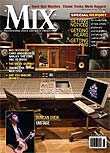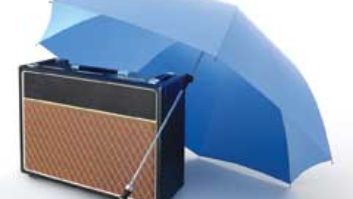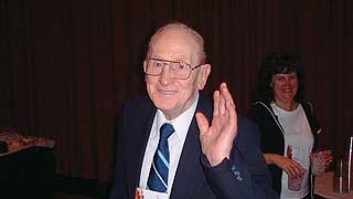
Sign O’ the Times
Just got my May issue of Mix! Amazing to see such full disclosure in the editorial page (“From the Editor: Who Has the Answers?”) describing the departure of editor Sarah Jones. It’s a real shocker to see someone actually come out and say it — in print at that. What a bold move.
The interview with [Wired editor] Chris Anderson was dead-on, although nothing anyone didn’t know already — just surprising to see it in print, laid bare for anyone who still hasn’t gotten the memo. I too am part of the “long-tail” experience. Many of my clients have been with me for more than a decade now (some longer) and it works in a similar way for me. Nobody sells a lot of stuff, but I have their archives, their recent stuff and, for most of them, their entire CD catalog. They come back as they need to, a bit at a time, when they need stuff. For the choirs and orchestras, it’s safety in numbers. One local client, now all but retired, is working on his “box set,” as we call it. He comes in every few weeks and works on his archives, putting stuff onto CD, cleaning it up, etc. He won’t be done for years at the rate he’s working.
I know Mix‘s thrust is more at the high-end “pro” level, but if you ever want to do a story on life in the trenches, at the grass roots level of classical, jazz, opera and choral music, I’ve got it all here.
Joe Hannigan
Weston Sound
Philadelphia, Pa.
The Value of Free
The Mix May 2009 feature “Getting the Music Noticed” concludes by asking, “Have any of your projects benefited from the model of giving music away as a ‘freemium’?”
I liked your article on this topic. I give away my single, “Song for Free,” which is about being a free song (www.ToddLerner.com). This works to my advantage in that this song and others on the album have been played on podcasts worldwide.
Here’s a link to a four-minute sampling of my songs played on podcasts in Japan, England, Sweden, Germany, Alaska to Hawaii, New York to Vegas, New Zealand, Poland and Jordan: www.songforfree.com/todd_played_worldwide.mp3.
Todd Lerner
The “freemium” has enabled me to increase my database of names and e-mail addresses to help me market my music to more listeners. I am beginning to take in revenue as the people in my database become paying fans.
A track that I produced, entitled “You Already Know” by David Rush of Universal Republic Records, was recently placed on MTV’s Rob Dydrek’s Fantasy Factory. My database of fans started purchasing the track for $1 from my Website (www.ElieMaman.com). Not only am I generating income for the track, at the same time, my fan base/database is growing as I gather all of the name/e-mail addresses. I have already sold a couple hundred downloads within only a two-week period.
Elie Maman
Elie Maman Productions
Shall I Compare Thee
In Mix‘s May 2009 issue, we asked readers to tell us how they listen and A/B their tracks to get the most translatable recordings.
I mix primarily on a pair of JBL LSR4326Ps. The fact that they have the built-in RMC (Room Mode Correction) function serves to help even out some bumps in my otherwise pretty well-tuned project studio. While I use the JBLs as the primary monitors for mixing, I have several other speakers connected for making comparisons.
I track most often using a pair of Mackie HR624s, and I also use them as another mixdown reference. I’ll engage a subwoofer sparingly to see what’s going on with the low end. From there it gets interesting.
I flip my mixdown monitoring around once I get things pretty solid on the JBLs and Mackies and start checking the mix on a pair of older JBL Control One speakers. I also spend some time listening through a pair of Bose satellite speakers (the little ones where the top section can swivel for dispersion). I really like the Bose speakers because they give me a more accurate idea of the sound coming through an average television. As I do a lot of music for TV background material, having the small speakers helps me ensure that the critical elements can be heard in my mixes. I occasionally check on a pair of Yamaha tower home-stereo speakers to get a picture of how the sound will be through the home-stereo environment. Finally, I kick up the mixdown through a small P.A. system comprising two speakers, each with a 15-inch driver and piezo tweeter element.
It sounds like a lot but I can access all monitors with the flip of a switch or two, and since I began using this combination I’ve had much greater success in mixes that translate into the world. There may be easier ways to accomplish all of this, but I’ve found that each of the main speakers (the JBL, Mackie and Bose speakers) have their own elements that make them well-suited to hearing what I need to get a good, balanced mix.
John (JD) Stefan







